This was thew brief: what were the best of 2010 in exhibitions, TV shows, music, movies and other cultural experiences? It didn’t have to be things that came out or were exhibited fresh in the last year, just what you found and loved. To help answer that question TEAM Art Life‘s dedicated band of writers took stock of their top four moments from the year while reflecting on their significance. In part one, Carrie Miller, Isobel Philip and Sharne Wolff offer their picks…
Carrie Miller
1. European Masters
In 2010 my pick for the great Australian art moment wasn’t even Australian – it was a blockbuster overseas show at a major museum. European Masters: Städel Museum, 19th–20th Century at the National Gallery of Victoria showcased some of the extraordinary modern masterpieces held at the Frankfurt museum. I was in Melbourne for the Melbourne Art Fair and especially to check out the inaugural Not Fair, an alternative satellite event founded by Sam Leach, Tony Lloyd and Ashley Crawford. And I saw some good stuff. But better than a room full of Max Beckmanns? They’re the sort of paintings that make you want to laugh and cry simultaneously. Perhaps it’s harder to have the same type of visceral reaction to work of your own time. To be fair, I was looking at modern German art – that I’ve coveted for years as images in books – and it’s art that comes with a pretty weighty history. While some of the local art I saw this year was really great, I can’t think of anything that would move Tony Abbott to want to confiscate it and display it in an exhibition of Degenerate Art. He had his faults, but at least Hitler understood art’s significance.
2. Joel Monaghan & Puppy
This year saw a new low for those lovable thugs in Australia’s toughest sport, rugby league, as Canberra Raiders player Joel Monaghan gained international notoriety when a picture of him receiving a blow job from a friendly puppy went web viral. In fact the incident in question makes Warrick Cappa’s taste in hairstyles look classy. More interesting than the act itself however was the problem the media had in describing it. Although the media that has in the past come up with headlines such as ‘Headless Woman Found in Topless Bar’ were at a bit of a loss trying to explain the photo. Even though rumour has it that Monaghan’s sexual encounter with a mate’s Labrador was not simulated as he claimed and that the picture seems to bear this out, the media got all coy. News.com.au reported that a photo of Monaghan emerged “showing him in a compromising position with a dog”. And the Herald-Sun’s lead on the story was simply : “Monaghan, a group of drunken teammates, a dog and a mobile phone photographer were at the centre of the NRL’s latest bad behaviour controversy that the RSPCA described as “sickening and disgusting”. But what makes this a great cultural moment is the response to the scandal by Canberra CEO Don Furner who managed to place the moral blame fairly and squarely where it should be: at the feet of new technology: “It’s a big cross to bear for doing something stupid out on the drink. The perils of the media and social media today are a great example of why you shouldn’t do it.”
3. Two and A Half Men
In one of the most bizarre insights into the mind of a psychopath, Austrian ‘incest monster’ Josef Fritzl, in his first ever interview since being convicted of holding his daughter in a dungeon as his personal sex slave for 24 years, has revealed that his favourite distraction from his lonely confinement is the TV show Two and a Half Men. He told Germany’s Bild newspaper that “it makes me laugh. Being dead sad all the time destroys the soul”. I bet. Has twisted Fritzl unwittingly provided us with proof that hackneyed American sitcoms are an evil that society needs to rid itself of? Or are the worst of the worst in society just a lot more like us than we’d like to admit? Back in the good old days, criminal perverts like the Moors murderer Ian Brady’s cultural obsession was Mein Kampf . That’s a red flag in itself. But the most successful contemporary sitcom of the day? Who can you trust anymore?
Perhaps this is what Hannah Arendt meant by the ‘banality of evil’.
4. Oh-pers
Celebrity worship reached a new level in Australia this year when thousands turned out to kiss the hem of Oprah’s kaftan. This cultural moment highlighted a broader shift in the way in which a tasteless, narcissistic mix of spirituality and capitalism embodied by modern-day celebrities has spread beyond its American origins. One Aussie fan told a reporter: “Oprah is my spiritual guide”. Back in the good old days entertainers knew their place. Even those considered musical ‘geniuses’ such as Keith Richards explained the secret to his greatness according to the following simple formula: “5 strings, 2 fingers, and 1 asshole”. Now we have singers, actors and TV show hosts who believe their talent has some higher spiritual meaning and purpose. This latest manifestation of fame – entertainers who believe they need to ‘give back’ by ending world poverty, adopting third world orphans or putting people in touch with their ‘higher’ selves – has been embraced by celebrity de jour Lady Gaga who rambled about her metaphysical connection to her fans in a Vanity Fair interview this year. Selflessly she proclaimed: “I don’t want people to love me; I want them to love themselves.” Luckily, grasping the extraordinariness of her talent, she is careful to protect it: “I have this weird thing that if I sleep with someone they’re going to take my creativity from me through my vagina.” Thank God for the Bieber. Let’s hope Justin remembers to keep it real and stick to his role as a formulaic bit of eye candy for tweens and middle-aged homosexuals.
Isobel Philip
1. Susan Hiller’s The Last Silent Movie
I didn’t have much time to spare in the MCA wing of the Sydney Biennale. Running around the gallery I gave some of the artworks little more than a passing glance. Susan Hiller’s The Last Silent Movie stopped me in my tracks. The work took up two rooms, one of which housed a video projection, albeit one without images. What you encountered in that dark room were lost voices. Assembling an archive of extinct and endangered languages, accompanied by subtitled translations on the empty black screen, Hiller gives us a window, or an earpiece rather, into voices and sounds that have been silenced. What you heard was the voice of absence itself. Sitting in the dark you could almost feel those voices. They took on a strange and ghost-like density. Palpably aware of this density the Welsh Romany phrase “did you ever see” almost slapped me in the face. In that instant, I wasn’t quite sure. Did I? Hiller extends the ambiguity between the visible and the invisible by mapping these voices. In a second room, in a series of individual etchings, extracts from each of the recorded languages are translated into both English and sound wave diagrams. Here the voices become topographies – records of an ancient and eroded landscape. In the room with the etchings you can still hear the echoes of the voices from next door. You can still feel those ghosts. They followed me out of the gallery.
2. Terrence Mallick’s Badlands
I saw Badlands (Dir. Terrence Malick, 1973) for the first time years ago but had never seen it in a cinema. The experience was completely different. Projected onto a big screen, as opposed to being boxed into a television or computer, the film could breathe. It is a magical film. I love its empty spaces – the empty space in those shots of Sissy Spacek and Martin Sheen walking through the desert just before they get caught and the empty space that lingers between them throughout the whole movie, that empty space where apathy and passion collapse into one another. A numbness, a beautiful numbness, seeps out of their embraces and into Malick’s camera. You don’t feel the full weight of that numbness until you see the film projected onto a big screen. There was something else that snuck up on me in the cinema, something that I hadn’t ever noticed before. There is a scene, quite near the beginning of the film, when the relationship between Holly and Kit (Spacek and Sheen) is just beginning (and before the killing spree begins), where Holly’s catfish dies and is thrown into a field of long grass. I’d always thought this moment was a narrative anomaly – some strange divergence in the story that is never revisited. But a few scenes later, the catfish reappears in a montage sequence. It is lying on the bedside table in Holly’s room near the very edge of the frame. It isn’t in a tank, just lying on the table, staring at the camera. That catfish and its surreal resurrection transformed the film entirely. It took my breath away.
3. Invertebrates in Japan
I spent Easter in Japan this year. In a country so full of people, where every square inch seems to reveal the presence of the human hand – be it the delicately groomed traditional gardens or the densely built up urban landscape – what enchanted me the most was something distinctly non-human. In the Osaka aquarium, near the end of the labyrinthine visitor trail that leads you past sharks and penguins, is a series of tanks full of jellyfish. Some of these tanks are so acutely minimalist, with a single pink jellyfish floating in a field of blue, while others are studies in excess. Here hundreds of jellyfish vie for a hint of personal space, ricocheting off one another with their tentacles entwined. I was utterly hypnotized. They moved to aberrant and non-human rhythms, as if beyond the glass an entirely different, non-measureable and non-metrical temporality reigned. Semi-transparent, they were almost invisible. These were otherworldly figures. I wasn’t the only one aware of this. The over-excited babble spilling out of the hoards of Japanese school children that drowned out the rest of the aquarium had completely dissolved. The room was silent. All you could hear was the whir of the filters in the tanks. Everyone stood transfixed, watching the dance of those mythical things.
4. Andrei Tarkovsky’s Photographs
A few years ago someone showed me this book of Andrei Tarkovsky’s Polaroid photography. I’d seen some of the images before, in a small, cheap book that you can find in most bookshops, but this book was completely different. It was something about the quality of the paper and the prints themselves – they seemed like completely different photographs. I’ve been searching for this book ever since, not deterred by the fact that it had gone out of print and any copy I found online was quite substantially out of my price range. I stumbled across it in a second hand bookstore this year. I’d walked in on a whim and saw its spine out of the corner of my eye. It was like uncovering buried treasure. Those photographs still leave me awestruck. Each time I open the book they seem different. While the book lies dormant on my shelf, the images cradled between its pages had morph and change of their own accord. I notice new things – new colours or forms that seem to reveal themselves over time. I had to earn them. The most beautiful thing about these photographs is the light that emanates out of them. The photographs pulsate, as if they were alive. [Tarkovsky, Andrey, 2007. Bright, Bright Day. London: White Space Gallery Ltd.]
Sharne Wolff
When I mentioned at home one day that I had been asked by The Art Life to write a wrap up of my 2010 ‘favourites’ over several categories I should have known I wouldn’t get away with it that easily. Everyone wanted to get in on the act including my son who arrived home last weekend from an overseas gap year. So what you read below isn’t just my opinion, it’s a consensus of choices by the entire wolffpack (including ‘Mr David’ and our three kids aged 15, 17 and 19) – with more than a slight skew to the Y/Z generation -which isn’t such a bad thing really.
1. Girl With The Dragon Tattoo
Our list on this front was pretty much unanimous. The Swedish film of the first in the millennium trilogy Girl With the Dragon Tattoo made everyone’s list although the second film didn’t get nearly so many votes. It was great to see a well-produced Australian movie in Animal Kingdom – as uncomfortable as it made us feel, it was completely enthralling. Everyone also loved The Social Network because…well, it was just a great all-round story and an accomplished movie and secretly we all loved knowing just what it takes to make a couple of billion dollars – didn’t we? Although other members of the family didn’t manage to get there, I saw Exit Through the Gift Shop and fell for the clever concept and the questions it raised about the great ‘con’ of the art market. My daughters chose The Hedgehog and Brothers respectively and my son, who has literally grown up with Harry Potter (and is an unashamed Emma Watson fan) apparently managed against all the odds to hunt down a screening of Harry Potter and the Deathly Hallows at a cinema in Arequipa, Peru. Inception was also near the top of our list for its way-stylish aesthetic and original story.
2. Exhibitions
I hate to think how many exhibitions I’ve seen this year but at least with visual art, it’s easier to store the memories as photographs in the mind. My personal ‘best of’ comprises art that has stayed with me in the sense that it’s had an impact of some kind, and not just in the visual sense. Although I visited the Melbourne Art Fair (loved Danie Mellor, Chris Bond and Peter Madden), Not Fair, the Sydney Biennale & shows at commercial galleries in all eastern states, I’ve tried to confine this list to Queensland because that’s where I’ve spent the most time in galleries. Being a net fiend as well I have to say I’ve also enjoyed the work of Tom Polo (via the internet and Twitter), Nathan Taylor (via the internet at Michael Reid) and the commentary of Vasili Kaliman via his email ‘Art Patrol’ newsletter and on Twitter. The Valentino Retrospective at Brisbane’s Gallery of Modern Art was, in a word, fabulous. The culmination of several shows in this State where ‘art meets fashion’; it outstripped the others and was a true experience as well as a show of gorgeous frocks. The Asia Pacific Triennial of Contemporary Art (#6) is now an established part of the QAG’s repertoire and I particularly enjoyed the works from the Mekong Delta, which included art from countries like Cambodia never before exhibited in this country, and an amazing selection of works from North Korea. Lorraine Pilgrim + Nyst Gallery on the Gold Coast showed some of Queensland’s most exciting emerging artists all year – and in particular the drawing show last month entitled Drawn Together, included young Gold Coast artists Nick Batchelor and Hannah Smith who showed major leaps in their art practices. Leslie Rice at Jan Murphy Gallery (recently reviewed by me on The Art Life) was also a very cool show. My daughter, who works at a gallery in Byron Bay and attends many exhibitions with me chose the winning work by Michael Zavros in the Doug Moran Portrait Prize, ‘Phoebe is Dead/McQueen’ as her favourite work of the year. For art between Tokyo and Santiago, my son recommended the works at the Palais de Tokyo museum in Paris and the entire city of Santiago, Chile (but in particular the Barrio Bellavista street art and the works in Pablo Neruda’s house). The most outstanding shows for me were at the University of Queensland Art Museum, which ran outstanding exhibitions all year. The year started with The State We’re in: Contemporary Queensland Photography which showed the depth of young talent in photography in the State and included recent work from Eric Bridgeman, Marian Drew, Martin Smith & Mari Hirata. The calendar at UQAM also included AES+F: The Revolution Starts Now, which was breathtaking in scale and stunning in its scenes of colour and fantasy. The recently closed show on the art of the Aurukun peoples of Queensland entitled Before Time Today: Reinventing Tradition in Aurukun Aboriginal Art was a great way to engage with incredible work from this area across several decades. In the end though, the winner of my favourite show for this year for its sheer impact and ability to confront, engage, provoke and show us the amazingly broad practice of one of our most important Australian artists was (and is) Fiona Foley: Forbidden.
3. MyTunes
Listening to music in our house means beating three teenagers to the iPod dock, apple TV or the car stereo. I have to get in a plug for one of my favourites of the year Love is Strange by Jackson Browne and David Lindley (recorded live in Spain). Yes – I know it’s just so middle-of-the-road but living with an HSC student for the second year in a row meant it was nice to kick back on a Sunday afternoon with a classy reinterpretation of some old favourites. (Thanks go to Bernard Zuel for recommending that one). The other votes in my house will have to include one Paul Kelly album (we live with a PK/KC tragic but we refused to let him include a Kasey Chambers as well) so ‘we’ have chosen the Paul Kelly produced Long Gone Whistle – The Songs of Maurice Frawley. The rest of the list includes dozens of other new releases and is so difficult to narrow down to a few but we checked the ‘most played’ list on iTunes and have come up with Powderfinger’s live acoustic album packaged with the Golden Rule CD, Florence and the Machine’s Lungs, and the JJJ unearthed Boy & Bear’s With Emperor Antarctica. This time my son went for two Swedish albums, The Radio Dept’s, Clinging to a Scheme and The Wild Hunt from The Tallest Man on Earth.
4. Bookage
Again, there was a mixture of votes for books but because two of us read it and both voted it first, The Book of Emmett by Deborah Forster was the clear winner. Truth by Peter Temple (a crime novel with a real Australian edge), Craig Silvey’s Jasper Jones, and Lovesong by Alex Miller also received votes. In the non-fiction category, Seven Days in the Art World by Sarah Thornton is an insightful study of the workings of the world contemporary art market and the reprint of A Little History of the World by E.H. Gombrich was originally written for children but definitely worth reading for a potted history of great world moments. The Mind and Times of Reg Mombassa by Murray Waldren was a good find at the Byron Bay Writers Festival. As I write this post I am half way through reading Sydney by Delia Falconer – a well-written book which (so far) manages to capture the heart and soul of Sydney in a way that seems so truthful and yet may have remained a mystery had it been written by a less talented author. Having Cried Wolf (funnily enough) was also recommended by the family as great summer reading for its fabulous short stories. Being on the road my son read many backpacker classics including Shantaram by Gregory David Roberts (the reading of which can last travelling through several countries) and four books by Gabriel Garcia Marquez. His overall recommendation was Everything is Illuminated by Jonathan Safran Foer (which was published in 2002).
5. Web Browsing
Although we hate to admit it, all the biggies – Facebook, Google, Wikipedia and Twitter have been well used by us in 2010. The message facility on Facebook, (combined with the iPod touch and it’s new Facechat facility) must win hands down because, when all other means of communication were impossible or failing, it meant we could communicate with our boy in hospital during emergency surgery in the small town of El Bolson, Argentina in October. (Thank you Dr Vincente Papardelle – and your Wallabies jersey is on its way). The Lonely Planet Thorn Tree forum and Destinations are great sources of information for all things travel-related and despite being partly owned by the BBC still manage to retain an Australian cultural bent – perfect. The State Library of Queensland’s user-friendly online technology course Looking at 2.0 was also well used by us over the year. We all love The Cool Hunter and The Thousands. The Satorialist, Crikey, Monocle and the ABC ‘s iView, The Drum and At the Movies were also popular. The Oatmeal is fun when you feel like a laugh as, of course, is youtube.
As for art, apart from the posts of my fellow contributors at The Art Life, the MOMA site is a personal favourite amongst public museums. 21st Century Blog is a super innovation from GOMA that accompanies the exhibition opening his month. Michael Reid’s website still takes the cake for best commercial gallery website because it includes so much more than just images and (as I have noted before) the prices of works are included.
I know that after forwarding this article we will realise we’ve missed a whole lot out, but you have to stop somewhere when holidays are looming. I’d like to thank everyone who ever read any of my posts in 2010 and, although it’s probably quite politically incorrect to say so these days, I wish you all a very happy Christmas (and a safe and relaxing holiday).
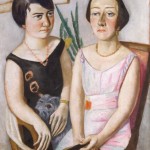
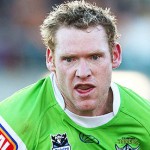
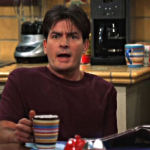
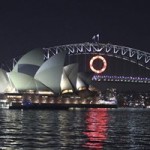
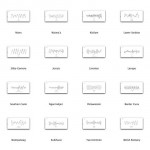
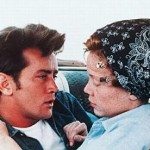
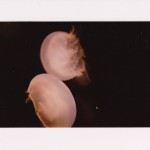
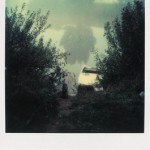
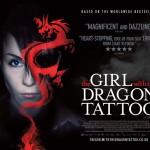
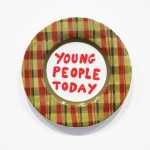
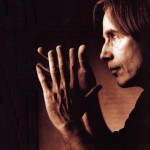
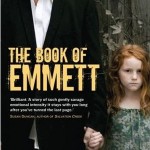
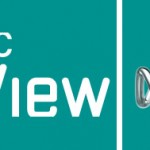

Pingback: Tweets that mention The Art Life 2010 Part 1 | The Art Life -- Topsy.com